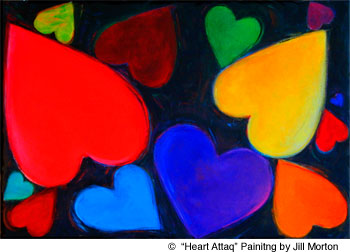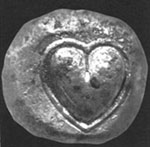
It’s not the color of Valentine’s Day... any color will do, as long as it’s a heart. As the celebration of love approaches, consider the origins of the symbol of love.
The most basic geometric shapes are circles, squares, rectangles, and triangles. These combine to create hexagons, polygons, diamonds, and other classic forms. As cultures and religions evolved, new shapes emerged: crescent moons, yin yang, crosses, teardrops, and hearts – for example. Some are easy analyze; others, like the heart, not so easy.
The origin of the heart symbol becomes more complex because the heart is found in many different cultures: Hindu, Buddhist, Celtic, Christian, Hebrew, Muslim, Aztec, and Taoist.
When we turn to geometry, we find no logic. The heart is not a derivative shape, as would be the case with the cross.
If we analyze the human body, could it be that the heart is nothing more than a botched attempt to draw the human heart? Iconography experts say that the symbol could be the result of a physiologically inaccurate description of the human heart—as a three-chambered organ with a rounded top and pointy bottom. This may have inspired medieval artists to create what we now know as the heart shape.

However, history does provide the best answer: The earliest “heart symbol” can be found in the ancient Greek city-state of Cyrene, 600 B.C. (long before the Middle Ages). A heart-like shape first appeared on a coin and apparently depicts the “silphium” seedpod – a plant that was very important to the economy. Although the plant is now extinct, it may have been used as a form of birth control.
Taking into everything into consideration, this ancient reference seems concludes that an herbal contraceptive is the source of the heart symbol. Therefore, the heart shape became associated with sex, and eventually love.

